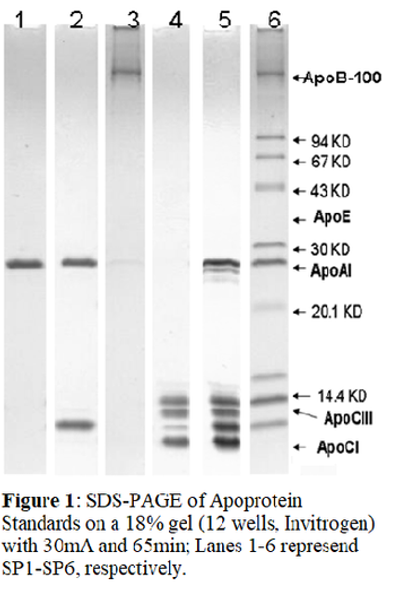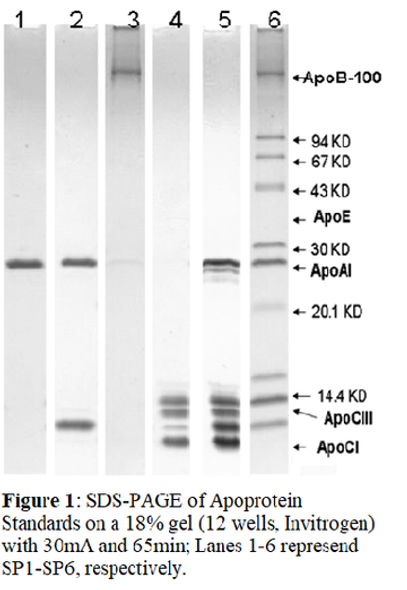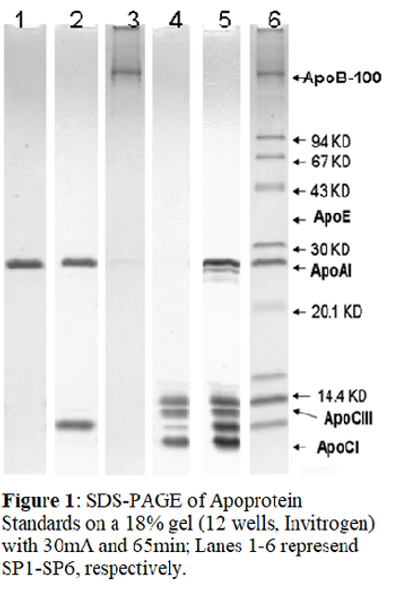Description
Human Apo As/Cs SDS-PAGE Standard | ABMC-SP5
| Concentration: | 0.20 mg/ml (vortex before apply for gel electrophoresis) |
| Size: | 100 μl (20 applications of 5 μl each). ApoAs/Cs Standard is a ready-to-use format - no mixing, heating or reducing required. It is pre-reduced and contains reducing reagents in the loading buffer. The protein standards resolve into bands with 6.6 kDa for apoCI, 8.5 kDa for apoCII, and 8.7 kDa for ApoCIII, and 28 kDa for Apo AI; ApoAII (8.7 kDa) appears between ApoCI and ApoCII. |
|
Source: |
From purified ApoAI/AII and ApoCs; fresh human plasma that has tested negative for Hepatitis C, HIV-I and HIV-II antibodies as well as Hepatitis surface antigens. |
|
Use: |
The Un-Stained ApoAs/Cs Standard allows you to check the result of your gel run and to judge western transfer efficiency. The attached gel was running with 4 µl of each for lane 1 (ApoAs/Cs) and lane 2 (Std Mix2) on an Invitrogen 18% SDS-Gel. |
|
Buffer: |
In loading buffer consists of Tris-HCl, MeSH, SDS, glycerol, and bromophenol. |
|
Storage: |
-20°C for short and long-term storage. Aliquot to avoid repeated freezing and thawing. |
*These products are for research or manufacturing use only, not for use in human therapeutic or diagnostic applications.
IMPORTANCE
Apo AI comprises approximately 70% of the protein moiety in HDL. It is a single polypeptide chain consisting of 243 amino acid residues without disulfide bound and with glutamic acid as the C-terminal residue and aspartic acid as the N-terminal residue. The molecular weight is reported to be 28 kDa (Brewer et al., 1978).
The roles of Apo AI in HDL function include reverse cholesterol transportation, lipid cholesterol binding, lecithin-cholesterol acyl transferase (LCAT) activation, and receptor binding, which is responsible for cholesterol esterification in plasma. Besides participate in cholesterol metabolism, Apo AI and HDL also suppress neutrophil activation, inhibit bacterial endotoxin, induce trypanosomal lysis, and other physiological activities. (Brouillette et al., 2001)
Apo AI levels may be inversely related to the risk of coronary disease. In previous research, Apo AI may affect diet-induced inflammation by either directly or indirectly altering lipid rafts. (Cheng et al., 2012)














